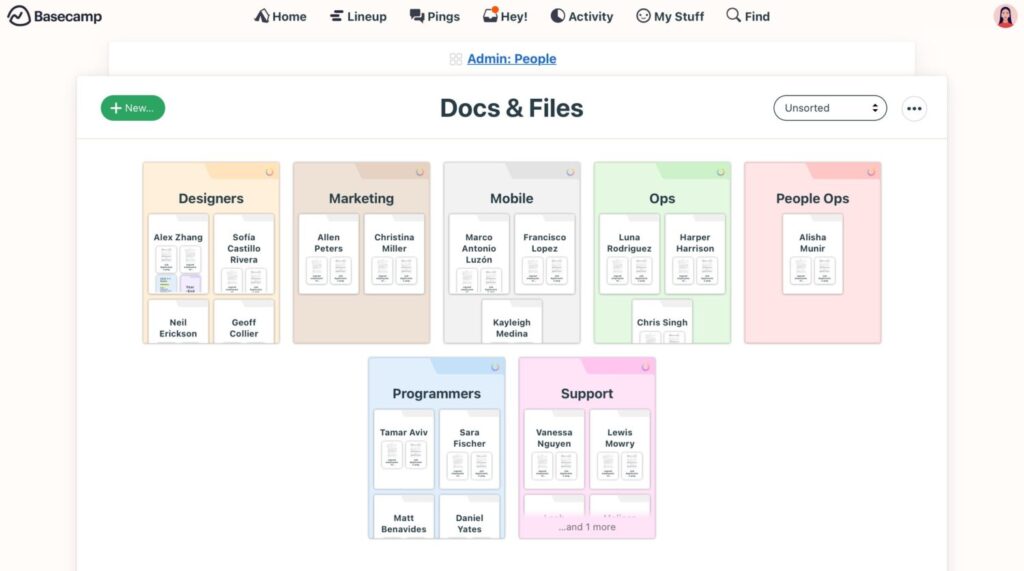The Ultimate Guide: How to Build a Customer Experience Department

Last updated on April 12, 2024
Understanding customers is a key step to success, and organizations do it best when they have a customer experience department in place. This department is tasked with analyzing customer experience and data and disseminating its findings to improve the organization’s processes, products, and services.
Furthermore, customers remember their good and bad experiences with brands. Having the right people in your customer experience team not only strengthens your relationship with your customers but also encourages them to become repeat customers of the brand. This means they will voluntarily advocate for your brand and promote your business by word of mouth.
Here’s your ultimate guide on how to build a customer experience department.
In This Article:
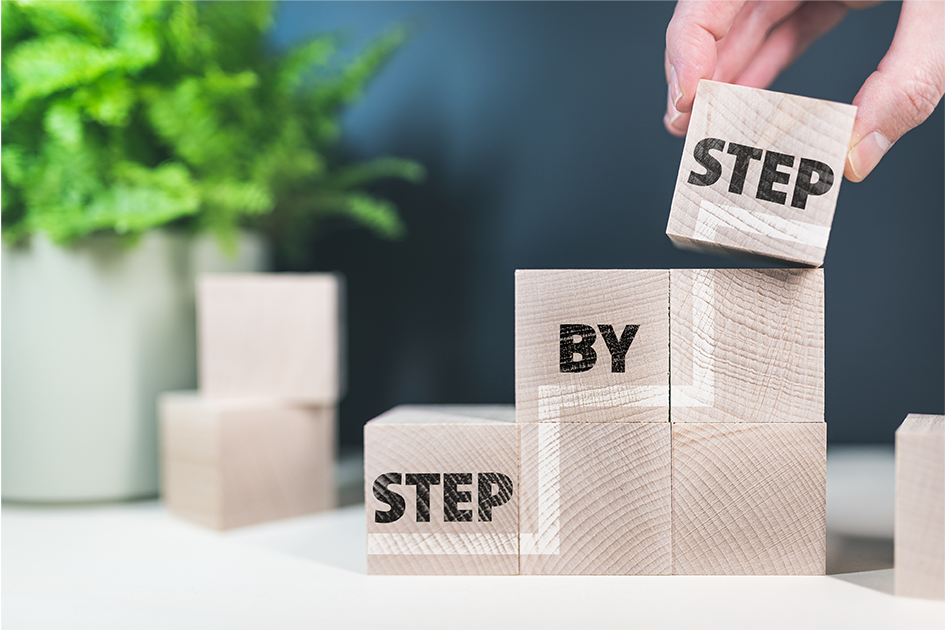
Preliminary Steps
Having the right people behind your customer experience department is vital. But when you’re looking for new people to fill roles your organization has never had, it can be quite a challenge.
We’ll walk you through the key steps to building a successful customer experience department in this guide. We will discuss topics such as defining the department’s goals and objectives, assessing the current state of customer service, and developing a strategy.
These preliminary steps will help you create a customer experience department that meets your customers’ needs and achieves your business goals. By implementing a structured approach with the help of a customer experience strategy template and conducting a thorough customer experience audit, you can lay a solid foundation for a department that not only understands but also enhances the customer journey at every touchpoint.
1. Identify the Company’s Goals
Before you start looking for people or draft your CX strategy, your first step should be to clarify and understand the wider objectives of your organization.
What does the company want to achieve? This is true both in terms of Customer Experience – e.g., are there strategic goals around CSat or NPS? -, and in terms of broader business objectives – e.g., increasing market share, reducing churn, cutting costs, etc.
Whether your company is using the Balanced Scorecard, OKRs (Objectives and Key Results), SMART, or simple KPIs, this will help you align the work of your future customer experience department to goals everyone in the company cares about. And it will make it easier to build strong relationships and a strong culture of customer centricity.
What’s more, it will help you build a link between your CX team goals and the broader company goals. For example, you will be starting to ask questions like: how does a shorter average response time help us achieve better retention? How is NPS increase related to revenue increase or reduced churn? And so on.
2. Map Your Current Customer Journey
To gain a better understanding of how exactly your customers interact with your business, you will need to map out the current customer journey. A customer journey map provides a detailed visual representation of how your customer moves through each interaction with your brand and what experiences they have.
There are different ways to create a customer journey map, and it’s essential to keep in mind that the customer journey is not always linear. Different types of customers will interact with your brand in various ways, they might go back and forth between different touchpoints, and that’s why mapping can be quite the challenge.

One way or the other, mapping your customer journey means answering the following questions:
- Who is the customer? – What are they like? What motivates them to buy? What are they concerned about?
- How many different ideal customers (personas) do we have? – What are their key characteristics (pro tip: consider both demographics or psychographics)? Where do they hang out? What are their goals?
- How do they get in touch with us? – Do different types of customers have a preferred way to buy? What are the key touchpoints for different personas?
- How can we measure the interaction? – What’s the goal at the different stages? What’s something measurable that can tell how well we are doing?
- How does the map look like? – To keep it simple, you can start with three stages: Awareness, Consideration, and Decision. Then expand with Retention and Advocacy (if that’s relevant).
Without going too much into detail here, it’s also worth remembering that there are four ways to map customer journeys.
- Service Blueprint provides an organized visual representation of the customer journey, showing all the touchpoints between a customer and a company’s services in an easy-to-understand format. It’s an effective tool for uncovering potential pain points and identifying opportunities for improvement.
- Current state mapping helps organizations pinpoint where they are currently failing to meet customer expectations, as well as any areas that could benefit from further optimization. This type of mapping is useful for pinpointing gaps in customer service and uncovering areas of improvement.
- Future state mapping focuses on identifying the desired outcomes that an organization wishes to achieve as part of its customer experience strategy. It helps organizations create a roadmap for future development and determine what changes need to be made to reach those objectives.
- Day in the life mapping is an excellent tool for visualizing a customer’s journey through their entire experience with a company. By creating a detailed narrative of what the customer does and how they move throughout their journey, organizations can gain valuable insight into exactly where customers are getting stuck or where their experience could be improved.
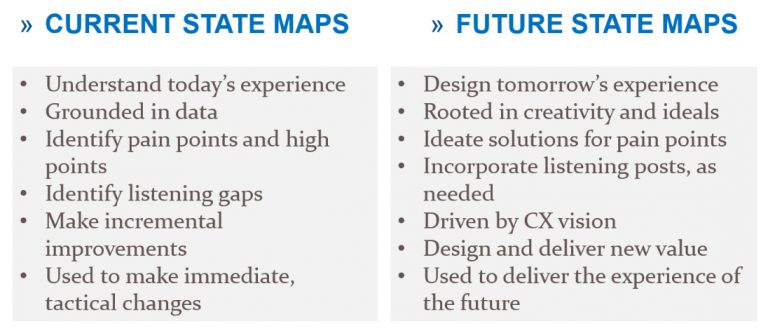
Current State & Future State from cx-journey.com
3. Decide When and How to Collect Data and Feedback
Utilize your customer journey to its full potential by identifying the data you collect at each stage and determining what more information you need to gather.
Remember, not all data is created equal. Set clear start and endpoints for your data collection efforts.
Tracking website visitor data over a long period of time, for example, requires setting up the necessary tracking mechanisms.
In contrast, if you are running a specific campaign and need customer experience data for a limited time, then you should focus your efforts on that period. If you collect data intentionally and selectively, you will gain valuable insights that will help you improve the customer experience and drive business success.
4. Identify What Other Departments Need to Be Involved
Customer experience extends beyond a company’s customer-facing roles. In an organization, there are different employees handling customer data or interacting with customers at various points in their journey. To ensure customer satisfaction, key members of different departments who have direct contact with customers should be involved.
The departments may include customer-facing functions such as marketing and customer service, as well as internal functions such as product development, manufacturing, and fulfillment. They play an important role in shaping the overall customer experience, and it is crucial that they know what their role is in the customer experience strategy and how it impacts the brand.
Also, their understanding and engagement in the company’s customer experience strategy is vital to its success. Here’s when you can leverage your knowledge and understanding of the broader company goals.
Pro Tip: Building strong relationships with other departments is not a one-off thing. To ensure alignment between the strategy and the needs of these employees and their customers, regular feedback should also be collected from them and they should always be kept in the loop. It’s hard work, we know!
 Building Your Customer Experience Department
Building Your Customer Experience Department
Are you ready to kick customer experience up a notch? Sure, customer service is important, and that’s a fantastic first step for many companies. But what would your business look like if you set the bar even higher and started building an entire department that focused on creating great customer experiences?
Some think having a focused CX team can be expensive, yet they don’t realize that no matter what size of a business they are, having an effective CX strategy and team is essential. Dedicating time and resources to build out their customer experience isn’t just important now – it’s downright paramount for businesses who want to stay ahead of their competitors in our ever-evolving digital age. So, let’s get started!
Here’s what you need to keep in mind as you build a customer experience team.
Background and Expertise
The department’s role in implementing changes is crucial, so you’ll want to fill it with people who are up to the task. Your team must be skilled in market research and analysis, be the voice of your consumers, and be the driving force behind change and the elimination of pain points.
For these reasons, customer experience departments will benefit from people who have a background in:
- Market and customer research, to tackle the collection and analysis of data, that is essential to the success of CX.
- User experience design, to be able to apply concepts such as human-centered design to cross-functional projects.
- Project management, to ensure that projects are well organized, completed on time, and meet key metrics.
- Communication and problem-solving, to promote team initiatives and manage change within the organization.
A recent report on customer experience professionals supports the areas listed above by stressing how the people you hire for your CX department should be able to:
- Conduct and analyze market research
- Handle responsibilities related to VoC (Voice of Customer)
- Implement programs involving customers, employees, product, and brand experience
Ideally, you will hire people who have already worked in Customer Experience, Customer Service, Customer Insights, and other related fields. But since that is not always possible, prioritize the skills we listed above, as those will ensure you have the right background in your newly formed customer experience department.
Pro tip: If your customer journey is mostly digital (e.g., website, apps, etc.), you may want to consider looking for people with relevant skills and experience. For example: website optimization, content marketing, and digital analytics.
Roles and Structure
The titles and the structure you will be giving to your CX team will of course depend on the size of it, and ultimately on the size of your organization.
Start-up and Small/Medium Businesses (CX teams of 3 to 5 people)
Compared to a large organization, a startup’s customer experience department may be smaller and less formal. Structures may be flatter and cross-functional, with employees wearing multiple hats and some of them also dedicating only half of their time to customer experience initiatives.
Here’s an example of how a startup’s customer experience department might be structured.
Customer Experience Manager / Director
This leadership role is responsible for overseeing the CX team, setting up the key processes and goals, establishing relationships with the rest of the organization, and reporting to executives and the board. They have responsibilities for both people management and project management.
Voice of Customer / Customer Insights Manager
This is the more analytical role, and it needs someone skilled at understanding data, customer experience analytics, taxonomies, conversational analytics, and in general customer feedback. They also need to be able to make sense of them, build reports, and recommend actions.
User Experience Specialist or Manager
This position is in charge of improving the customer experience through human-centered, design-thinking methodologies. Throughout all touchpoints and channels, the User Experience Specialist is responsible for creating an enjoyable, seamless, and intuitive customer experience. The role might need the support of a User Interface designer or a Digital designer if your company’s offering is mainly digital.
Customer Experience Specialists
Depending on your budget or company size, you might be able to hire additional Customer Experience Specialists to complete your Customer Experience Departments. Their duties are various, they have a supporting function, and they help implement the overall CX strategy. In this sense, it is good to look for junior people who can complement the skills of the other members of the team and can grow within the organization.
Larger Organizations and Enterprises (CX teams of 10 to 20 people)
Typically, a large organization’s customer experience department has a complex structure and is a significant part of the company. In addition, it may be composed of a number of teams and functions, each with a specific role and responsibilities.
Here’s an example of how an enterprise customer experience department might be structured.
Chief Experience Officer (CXO)
The Chief Experience Officer is the highest level and is responsible for promoting Customer Experience in the organization, while at the same time ensuring that the Customer Experience team has everything they need to achieve their targets and execute their strategy.
An organization’s Chief Experience Officer (CXO) is responsible for the organization’s overall customer experience strategy and direction. Typically, the CXO is a member of the senior leadership team and is responsible for ensuring the customer experience is integrated across the entire company. For that reason, a big part of their responsibility is to sell the value of customer experience to other stakeholders.
A CXO must develop a long-term vision for customer experience and ensure that it aligns with the organization’s overall goals and strategy.
Note that large organizations often also have a Chief Customer Officer (CCO), and their responsibility is mainly related to managing the customer service and customer support function of the company. In some cases, the two roles might be combined though.
Customer Experience Operations Manager (CXOM)
Data and methods of data gathering can vary per department, which can create silos. The CX operations manager’s role is to unify everyone involved and guide the team in the best ways to use the tools available to the company. These tools can be automation software, communication apps, or help desk suites.
While the CXO is responsible for the overall customer experience strategy, the CXOM is responsible for the day-to-day operations and management of the customer experience team. The two positions work closely together to ensure that the customer experience is aligned with the organization’s overall strategy and goals.
Customer Experience Analysts / Voice of Customer Managers / Customer Insights Managers
This role utilizes advanced analytics and research techniques to analyze customer feedback to identify areas for improvement. They also monitor customer behavior and trends to inform product decisions and track changes in customer sentiment over time.
Additionally, they use surveys, focus groups, and other methods of soliciting direct customer input to create actionable plans that drive better experiences for customers. Ultimately, their goal is to provide strategic recommendations based on meaningful insights that will help shape the future growth of the business.
As we are addressing the needs of a larger organization, there might be 4 to 8 such professionals in customer experience departments, each one responsible for a specific business unit, or part of the offering.
Service Design Managers and/or UI Managers
They are responsible for creating and maintaining a customer-centric service design process, as well as managing, monitoring, and evaluating the performance of services and products against set goals.
With the help of analysts in the team, they research and analyze current trends in the market and in service design, and then identify areas for improvement within the existing products and services. Additionally, they are responsible for working with cross-functional teams to ensure cohesive delivery.
Customer Experience Managers and Customer Experience Specialists
They are in charge of executing against the overall strategy and implementing initiatives that translate data and insights coming from the analysts into concrete actions. They manage projects of different complexity, often involving other stakeholders and departments.
Their primary goal is to ensure that customer experience is alive within the organization and that customers actually perceive the company and brand as active and proactive in understanding their needs and wants.
Customer Support
In some cases, the customer support function might be part of the larger customer experience department. When this happens, the size of the department increases exponentially, including roles such as Head of Customer Support, Customer Support Managers, Technical Support Specialists, Customer Support Representatives, Head of Quality Assurance, Quality Assurance Specialists, and more.
It is worth noting that most companies keep customer experience and customer support separated, each one of them reporting to different executives. This is mainly because the customer support function can be extremely complex. The overall goal is nonetheless the same: creating experiences for customers that exceed their expectations and make them want to come back for more.
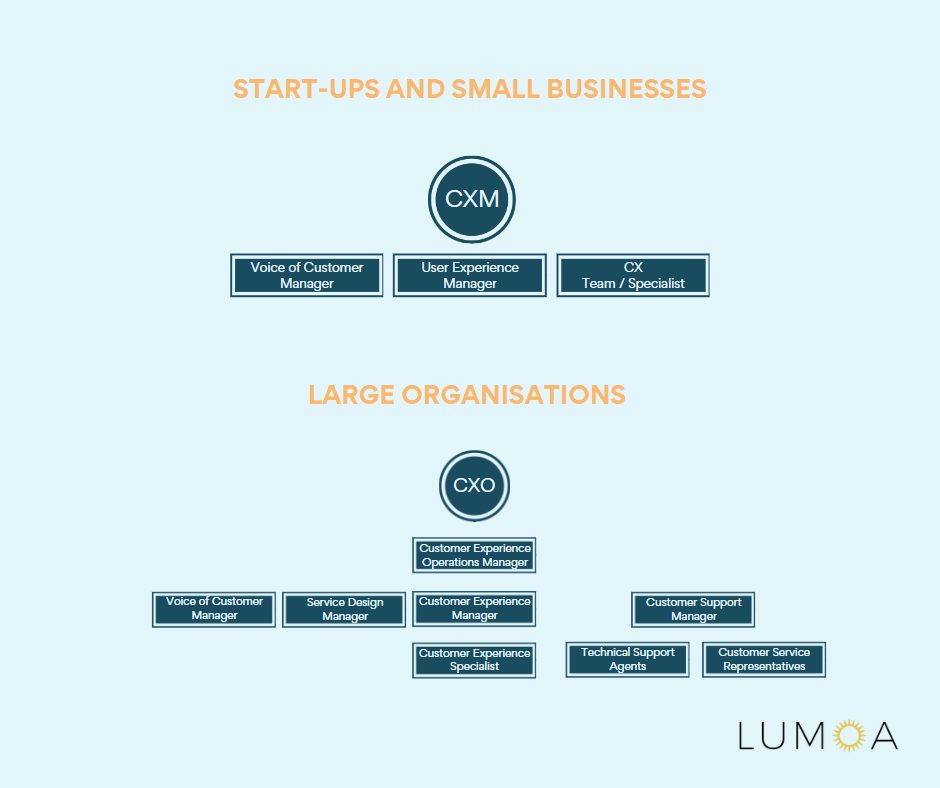
The difference between a small and large organization
Designing Customer Experience Processes
Crafting the customer experience is a combination of many different processes that need to be in place. These processes are:
1) Feedback and Data Collection
Having processes in place to facilitate consumer feedback collection is essential. You can collect feedback through customer interviews, polls, reviews, surveys, or installing the proper customer feedback tools. It’s important to remember that your organization probably already has a lot of customer data available, so starting with an assessment of what is there and what instead might be missing is a good first step.
2) Feedback and Data Analysis
The next question is, how do you make sense of all the data you’ve gathered? For the team to derive insights from the data, it must first be organized and compartmentalized. It requires the expertise of a data analyst, an agency, or an automation tool.
3) Feedback and Data Reporting
This stage is about developing methods for translating the insights into a digestible format that makes sense to those consuming it. You will soon realize that there is no one-size-fits-all report that you can distribute to everyone.
This is why it is important to establish relationships with the different stakeholders and clearly understand their goals and motivations. Build this aspect into your processes.
4) Closing the Loop and Measuring Success
Data collection, analysis, and reporting are nothing without action. When you build a customer experience department, make sure you have processes in place to translate data into actions, and actions into successes, both for your team and for the company.
Tech Stack For Your Customer Experience Department
Another crucial step as you build a customer experience department is to figure out what tools and software your customer experience department needs to implement its strategy.
Depending on the maturity of your company, you or other colleagues might already be using some of the following tools, so even in this case it is worth it to start with an assessment of what tools and systems are already in use.
Before we get to the different categories of tools you might consider, be aware that there are solutions that aim to cover the full spectrum of needs of a customer experience department.
Platforms such as Lumoa allow customers to:
- collect feedback via surveys or import customer data from different sources
- analyze customer feedback, categorize it, assess the impact on key metrics, and make sense of it
- assign tasks to colleagues throughout the organization
- and report on the results
The real benefit of these customer experience platforms is that they consolidate customer data in one place, therefore making it easier to establish a real customer-centric culture that goes beyond the customer experience department.
Now that you know how to look at customer experience tools holistically, here is a brief review of the main areas where tools are available.
Survey or Feedback Collection Tools
Survey tools are used to collect and analyze data. They allow users to create surveys, polls, and questionnaires that can be distributed online or via print. They also typically provide basic reporting capabilities. Some of the most popular tools are:
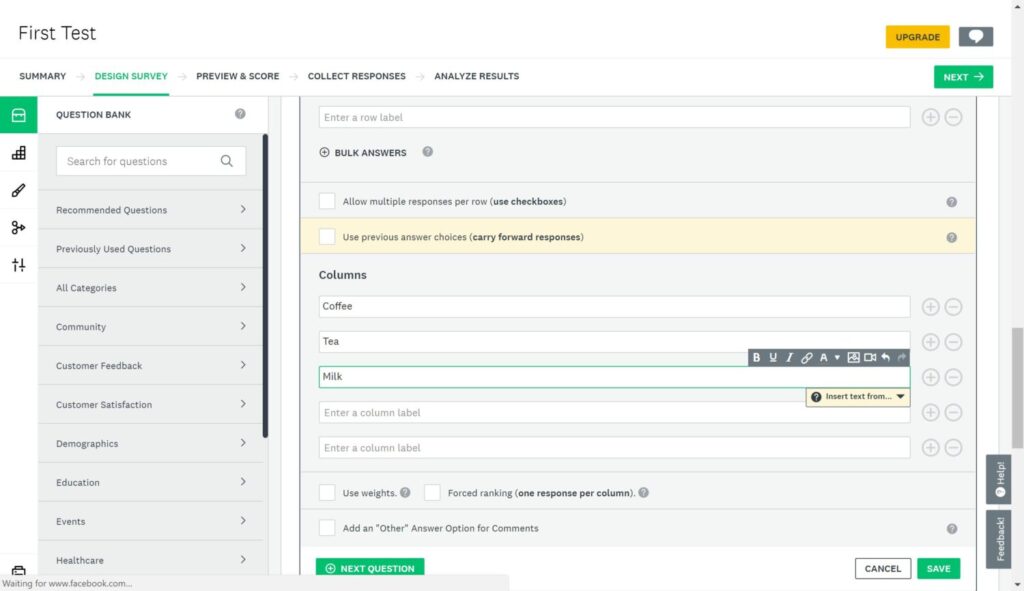
Image from PC Mag
Feedback Analytics Tools
The importance of feedback analytics tools lies in the fact that they allow organizations to collect and analyze customer feedback in a systematic and efficient manner. Moreover, they can identify patterns and trends in customer satisfaction, dissatisfaction, and preferences, thereby improving their products, services, and overall customer experience.
Furthermore, these tools can be used to identify areas for improvement in an organization’s business, as well as track progress over time.
Here are some examples of tools you may want to take into account:
Lumoa, for example, looks at any customer interaction, automates the analysis, and highlights the items with the biggest impact on your key KPIs. This is a huge help, not only when trying to take ownership of customer experience metrics such as NPS or CSat, but also when attempting to have customer experience impact business metrics.
Project Management Tools
Because of the sheer amount of tasks that will fall under the customer experience team‘s purview, a tool that helps you keep projects, tasks, milestones, and deadlines on track will be indispensable.
Here are a few stellar choices:
Pro tip: While the mentioned project management tools and task management software offer a range of features to streamline your workflow, consider incorporating AI-powered tools to enhance your project management capabilities. AI project management tools can automate repetitive tasks, provide real-time insights and analytics, and even predict potential roadblocks, empowering you to make informed decisions and keep your projects on track.
Reporting Tools
By presenting data insights visually appealingly, insights can be easily understood. Those who are less familiar with data analysis can benefit from this by making the data more accessible and engaging.
Here are some examples of tools you might consider:
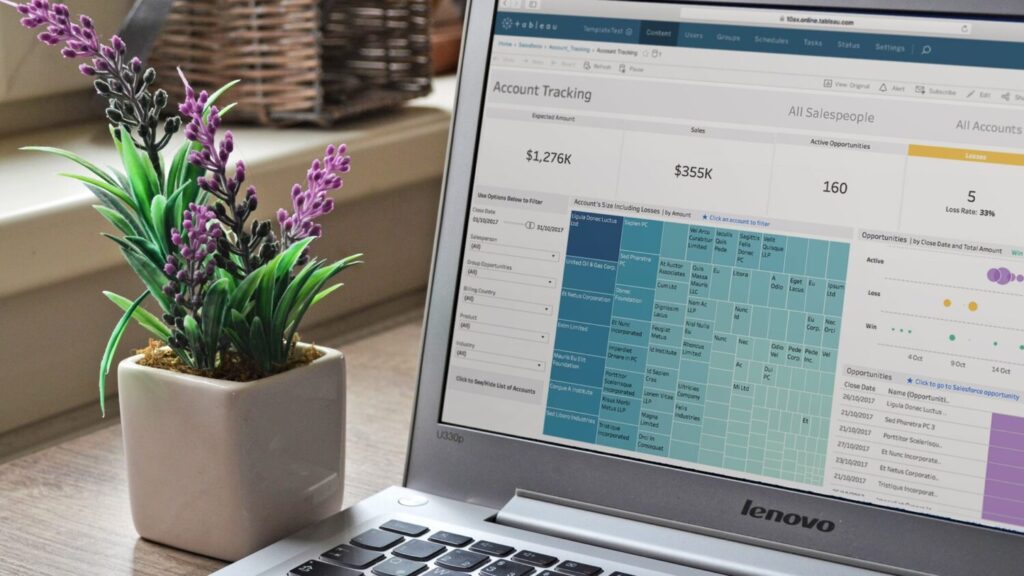
Pro tip: Remember also to determine whether there are any other company-wide tools (such as CRM or help desk software) where important customer data might be stored. Integrating CRM of helpdesk software with feedback analytics tools such as Lumoa, for example, will unlock the possibility of looking at insights by customer segment or customer value, therefore improving your chances of determining real business outcomes with your customer experience initiatives.
 Evaluating the Results of Your Efforts
Evaluating the Results of Your Efforts
To measure customer experience efforts, Ed Thompson, Distinguished VP Analyst at Gartner, recommends the following six categories and practices:
Customer Satisfaction (CSAT)
This is a basic metric that gauges how well your company has satisfied- or met- the demands of its customers. CSAT can be obtained by surveying consumers and asking them to rate their degree of satisfaction with each item. For instance, “On a scale of 1 to 10, how satisfied are you with our service?”
To calculate your CSAT score, divide the positive replies by the total number of responses, then multiply by 100. Your answer should be in percentage.
Customer Loyalty/Retention/Churn
This considers how many customers come back and stay regular customers and how many stop using your company’s products or services over a certain period. Some measurements to use are purchase frequency, average order size, repeat orders, and the number of loyalty program members.
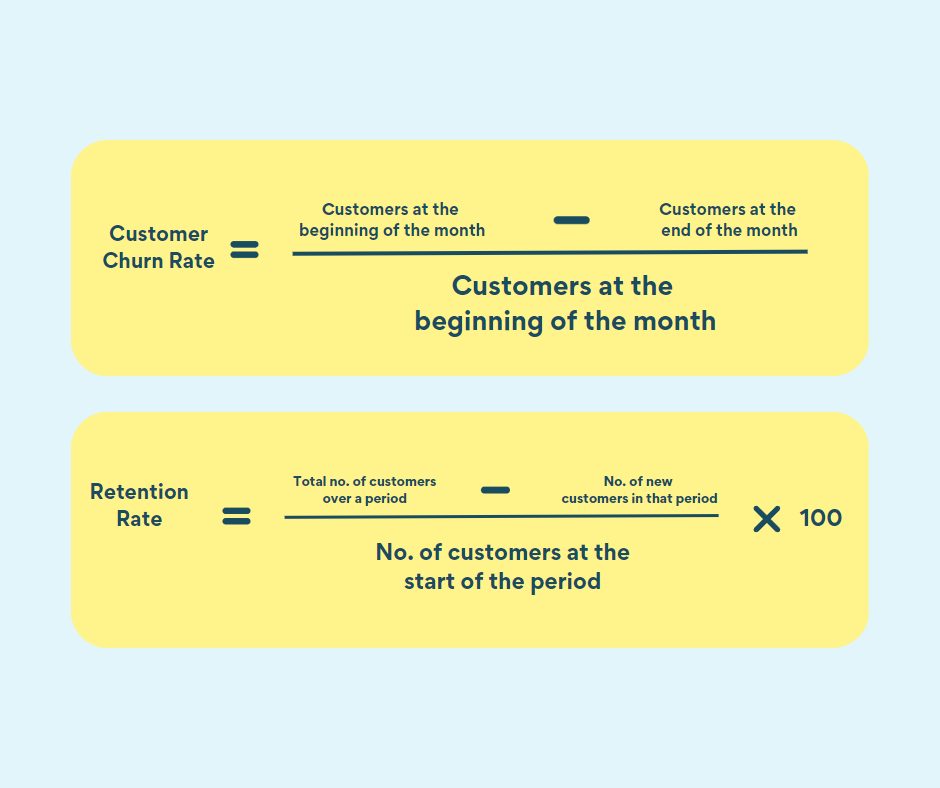
Advocacy/Reputation/Brand
This determines the customer’s willingness to recommend your products or services. Some metrics you can use are price sensitivity, social media sentiment scores, trust ratings, and event attendance.
Quality/Operations
This looks at how well your products or services meet customer standards and requirements. Thompson says that when a product or service fails to meet those standards, the customer experience will be terrible no matter what is done to fix it.
Employee Engagement
When employees see many failed attempts to improve customer experience or experience executives who only want quick results, they can get disengaged. Employee engagement then becomes a CX strategy challenge. 86% of organizations have cited employee engagement as having an equal or more significant impact than other CX challenges.
To the list by Thompson, we believe it is worth adding the Net Promoter Score, which many consider the gold standard to measure Customer Experience.
Net Promoter Score (NPS)
If you’re a business looking for ways to measure customer loyalty and satisfaction, Net Promoter Score (NPS) is your go-to metric. NPS relies on asking customers to rate their likelihood of recommending a business or product on a 0-10 scale. Ratings from 9-10 are considered “Promoters,” 7-8 are “Passives,” and 0-6 are “Detractors.” The Net Promoter Score is then calculated by subtracting the percentage of Detractors from the percentage of Promoters. With this metric, you can gain insight into how satisfied customers are with your business or product.
Integrating text analytics and AI into the customer experience evaluation process enhances this metric’s value, enabling businesses to delve deeper into customer feedback. By analyzing open-ended responses associated with NPS surveys through text analysis, companies can uncover the reasons behind their scores, offering more nuanced insights into customer experience. This AI-driven approach allows for a more comprehensive understanding of customer loyalty and satisfaction, transforming raw data into actionable intelligence for improving customer experience.

Tips For Leading a Customer Experience Department
Invest Time in Cross-functional Relationships
Collaboration among cross-functional team members can help the team flourish. For the team as a whole to succeed, members must learn to work and rely on each other. But first, the team should mutually respect each other’s contributions and place in the team.
A good strategy to foster these cross-functional relationships is to have team members regularly celebrate the successes of their colleagues. One approach is through the use of a communication platform that enables members to recognize one another publicly.
Train in Reporting and Story-telling
Data reporting is a crucial skill that entails gathering, evaluating, and structuring data into an understandable format. It is a process that helps analyze team performance and supports decision-making; thus, it must be done effectively.
As statistics and data can become dull over time, more and more businesses are turning to storytelling to improve employee engagement. When the speaker can elicit emotion from their audience, they can present the report more effectively. People will remember the insights better if they can relate to them than if the information was just read to them.
Develop Career Paths For Your Team Members
To keep the team motivated, you need to invest in their growth. Please keep track of your team’s progress by establishing clear career paths that will help them move up in their positions. This means giving members goals to work toward and telling them what skills, knowledge, and experience they need to move forward.
Let Them Hang Out Where Your Customers are
While data is the backbone of building a successful customer experience strategy, letting the team experience firsthand what customers do can be an eye-opener. To give them a real-world experience they can learn from, encourage members to assume the role of the consumer and make a purchase or inquiry.
This should enable them to identify any room for growth and areas where the company thrives.

Conclusion
A customer experience department is essential for any company that wants to retain happy and loyal consumers.
To develop and implement a customer experience strategy, a company must understand its goals and current status to build a customer experience department.
As a result of the investment in customer experience, customers will develop brand loyalty, act as brand ambassadors, and advocate for the company, increasing customer retention and overall business success.
Finally, remember that it’s important for companies to understand that investing in building a customer experience department is not only a cost but also an investment in long-term growth and success.
